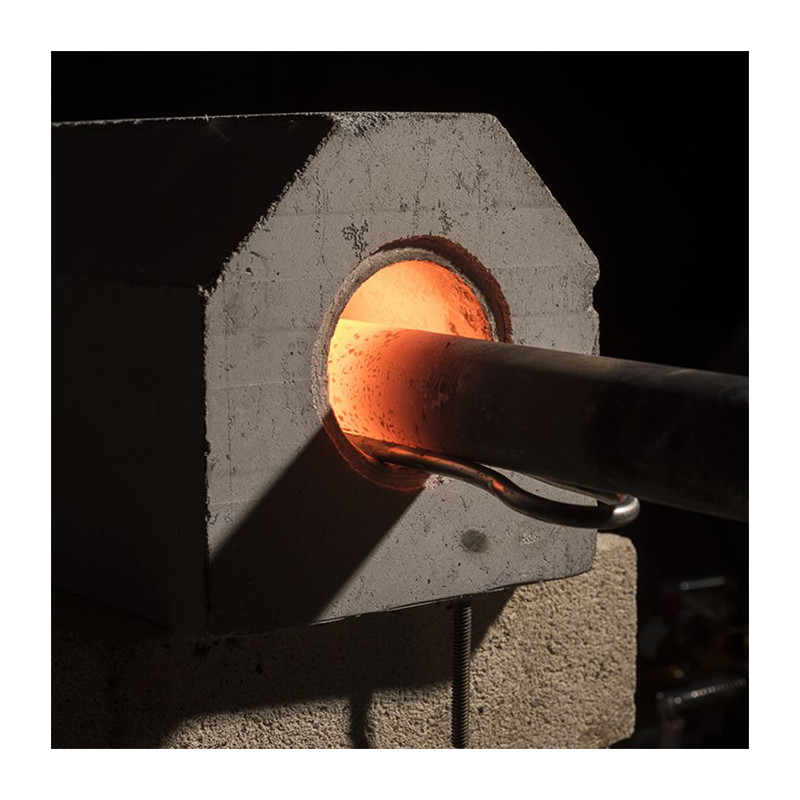

Category


Photos are for informational purposes only. View product specification
please use latin characters
Forging includes methods of plastically deforming a metal by hammering, sometimes resulting in a stronger workpiece. Most often, a hot-forming process is used in which the temperature of the workpiece is elevated in an oven, by direct flame or by induction.
Open-die forging usually involves striking the workpiece with a hammer against an anvil: good for short-run or single-piece work.
In impression-die (or closed-die) forging, the workpiece is compressed between two die halves, such that the metal is deformed in the cavity between them. Forged pieces have outstanding grain structure and the best combination of mechanical properties.
Induction heating is a prime candidate for many forging applications. The process and economic inefficiencies of gas furnaces or flames are avoided with this unique technology which quickly and accurately delivers the required heating to the workpiece only. Additional benefits accrue since the heating can be integrated into the forging process nearer the die. With Ameritherm's modern technology, remote heat stations are placed directly into production lines for high volume rapid forging processes.
| Flattening/Bending Steel Tubes | Forming a Magnetic Steel Part | Forging a magnetic steel rod | Preheating steel rods for forging in a fastener manufacturing process | Forging rods of various materials and dimensions |
|---|---|---|---|---|
 |
 |
 |
 |
 |
Are you interested in this product? Do you need additional information or individual pricing?
Forging includes methods of plastically deforming a metal by hammering, sometimes resulting in a stronger workpiece. Most often, a hot-forming process is used in which the temperature of the workpiece is elevated in an oven, by direct flame or by induction.
Open-die forging usually involves striking the workpiece with a hammer against an anvil: good for short-run or single-piece work.
In impression-die (or closed-die) forging, the workpiece is compressed between two die halves, such that the metal is deformed in the cavity between them. Forged pieces have outstanding grain structure and the best combination of mechanical properties.
Induction heating is a prime candidate for many forging applications. The process and economic inefficiencies of gas furnaces or flames are avoided with this unique technology which quickly and accurately delivers the required heating to the workpiece only. Additional benefits accrue since the heating can be integrated into the forging process nearer the die. With Ameritherm's modern technology, remote heat stations are placed directly into production lines for high volume rapid forging processes.
| Flattening/Bending Steel Tubes | Forming a Magnetic Steel Part | Forging a magnetic steel rod | Preheating steel rods for forging in a fastener manufacturing process | Forging rods of various materials and dimensions |
|---|---|---|---|---|
 |
 |
 |
 |
 |
Your review appreciation cannot be sent
Report comment
Report sent
Your report cannot be sent
Write your review
Review sent
Your review cannot be sent
